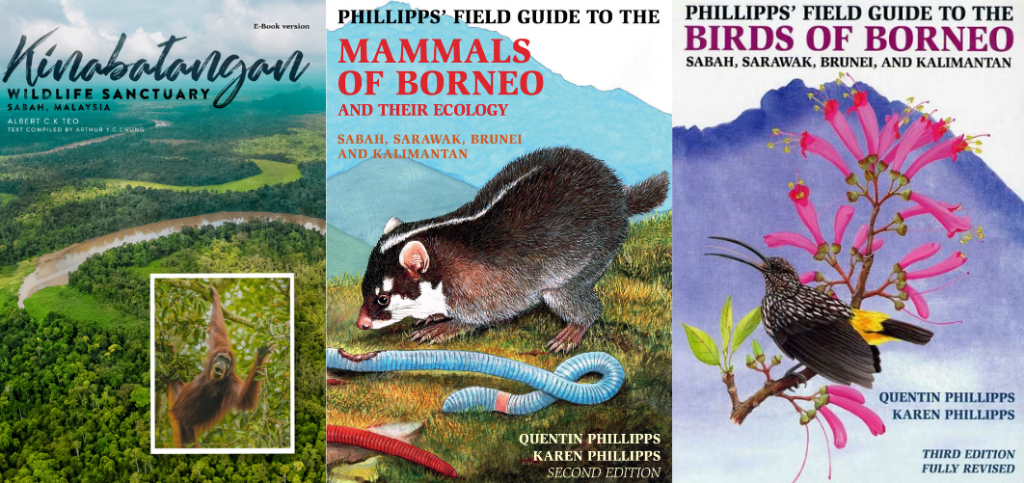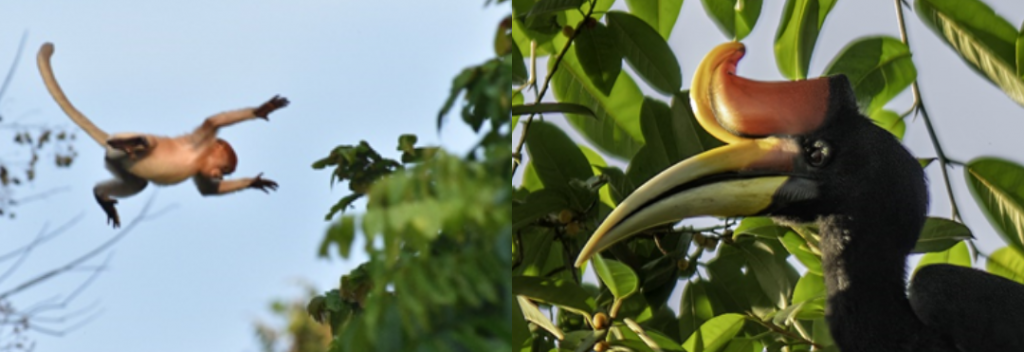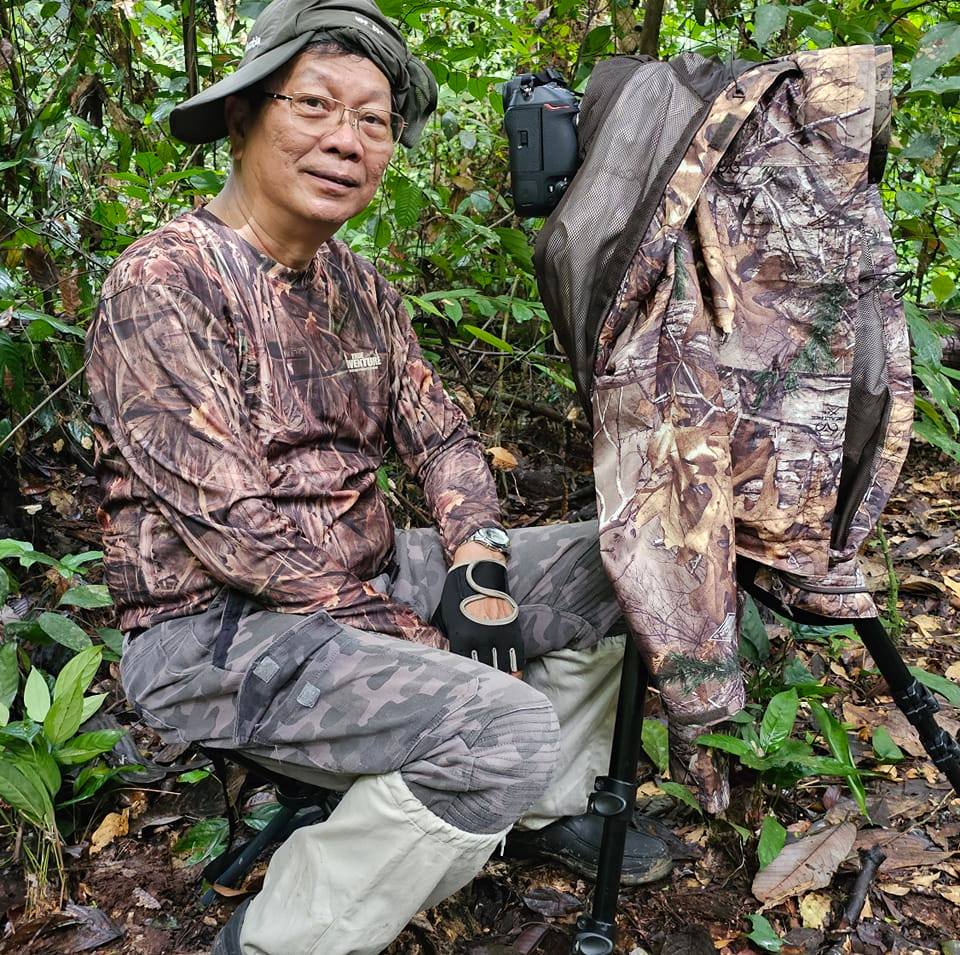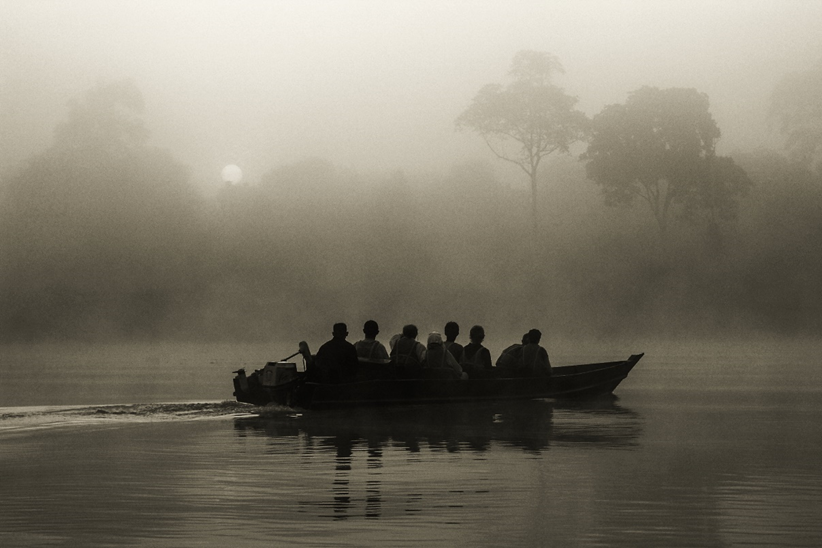1. Research on Areas
Read up on the areas you are visiting and on what wildlife you like to photograph before you go. Get a copy of our complementary E-book from our website on 'Kinabatangan Wildlife Sanctuary'.
They are many books on mammals and birds. Check out the website of Natural History Publications. The office is on Ground Floor, Wisma Merdeka, Kota Kinabalu.

On birds and mammals of Sabah and Borneo, read up on the books Birds of Borneo and Mammals of Borneo by our Conservation Fellows, Karen and Quentin Phillips.
2. Ways To Reduce Noise Pollution on Land Tours
On land tours, turn off the car engines. This will also reduce noise and vibration. On long day tours, make sure you drink plenty of water to avoid dehydration. All our vehicles are equipped with filtered drinking water.
3. Ways To Reduce Noise Pollution on River Tours
On river tours, avoid using two-stroke outboard engines. They are not only polluting and noisy to the passengers but also the wildlife.
Use electric motors on the boat if you have one in order to get closer to the unsuspecting wildlife and to reduce noise and vibration. (All BET boats in Sukau are equipped with one).
4. Tip For Morning Photography
Most tourists go on dawn cruises when proboscis monkeys are just waking up from their sleep on treetops at the river’s edge. The noise from the river boats tend to drive many of them into the forest.
However, when most guests return to the lodge for breakfast, proboscis monkeys become more relaxed. Bring a short zoom like 24-70mm for wide angle subject and environment shots especially in morning mist.

5. Best Time For Picture
As the sun rises and as the mist dissipates, birds like hornbills, storm stork and animals like monitor lizards, crocodiles, langurs, macaques become more active and feed on the lower branches at the river’s edge. It is best to stay with one harem group and wait for action.
Without fail, they will move and leap from tree to tree or across the river. The best photos are often taken without other boats around when the birds and mammals are more relaxed. The light is also better after sunrise.

6. Wildlife Photography
For wildlife photography, bring a 200-500mm zoom lens or equivalent and a teleconverter x1.4 and a camera with shutter speed of 10-30 frames per second.
Use telephoto lens to take photos of wildlife farther away from under the trees to reduce angle of view of subject instead of getting close to the wildlife and looking up animals on tall trees. It is against the law to ask the guide/boatman to get onto the land in the sanctuary.

7. Shutter Speed
On moving boat, increase shutter speed or ISO to reduce blur. Increase your shutter speed to 1/2-3,000 per second for birds in flight. Many of my best photographs are taken during mid-morning and before late afternoon when there are fewer tourist boats around.
Proboscis monkeys and orangutan, like other animals are then more likely to show you their front side and not their back.

8. Private Boat
For serious photographers, it is best to stay out all day by arranging for private boat hire for the whole day. Bring a packed lunch and drinks with you. We also have an optional private “In search of elephant” tour.

9. Be Prepared
Work with the weather, not just at dawn and dusk. Always bring raincoat with you. Don’t put away your camera or cut short your river cruise just because it looks like it is going to rain. The rain or storm is usually for about an hour or so.
Some of my best photos were taken immediately after the rain when birds are very active. Just take out your raincoat and wait through the storm. Use hat with string when in the boat to avoid hat being blown off by the wind. Wear sneakers and long pants to be safe in getting in and out of boats.
10. Meet Our Residents
On the river cruise, you may not see a lot of flowers in the forest as compared with those at the lodge. So you are more likely to see many more sunbirds and insects around the lodge.
Keep an eye out for our 3 resident orangutans namely mother “Lucky” with her two male teenage orangutan “Day” and sibling “Hope”. Sounds of gong being struck six times mean orangutans have been sighted outside the room.


Written By Albert Teo
Managing Director of Borneo Eco Tours
